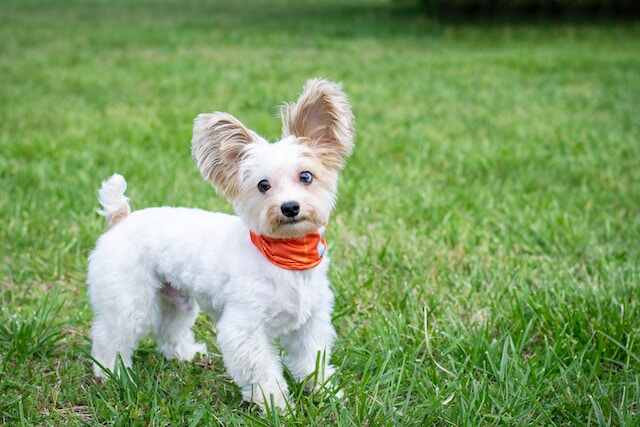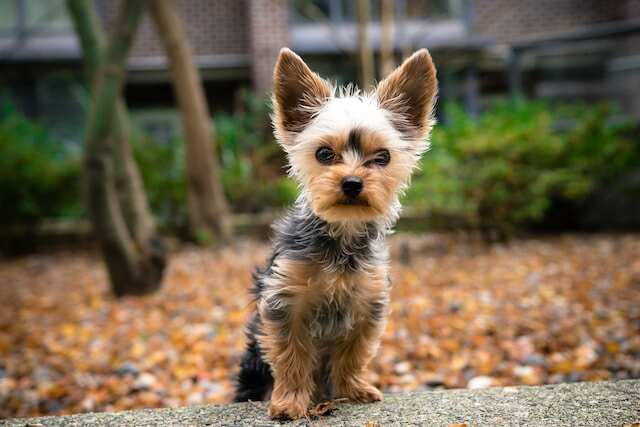Is your furry friend’s fur in need of some TLC? Wondering, “How often should you groom your dog?” We’ve got the answers you’re barking for! From keeping their coat shiny to avoiding doggy odors, discover the perfect grooming frequency. Get ready to unlock the secrets to a happy, healthy, and pampered pooch!
Key Takeaways:
- Grooming is not just about aesthetics; it plays a vital role in the overall well-being of small dogs.
- Regular grooming helps keep their coat healthy, prevents matting, and promotes good hygiene.
- Establishing a grooming routine ensures your furry friend remains comfortable and happy throughout the process.

Why Grooming is Important for Your Dog
If you’re a proud pet parent of a four-legged friend, you know how important it is to take care of them. One of the most important parts of pet ownership is grooming.
Regular grooming for your pup is essential for their health, comfort, and happiness.
Not only does grooming help keep their fur clean and healthy, but it also helps to prevent infections and skin problems.
It also helps to reduce shedding and keep your home free of pet hair.
Grooming is also important for bonding between you and your pup, as it helps to build trust and strengthen the bond between you.
In short, grooming is essential for your pup’s wellbeing, so it’s important to make it part of your regular routine.
How Often Should You Groom Your Dog?
It’s important to groom your dog regularly in order to keep them healthy and looking their best. But how often should you groom your pup?
The answer depends on several factors, including the type of fur your pup has, their activity level, and the climate they live in.
For short-haired dogs, you should aim to groom them at least once a week.
This will help to remove dirt, keep their fur healthy, and prevent any tangles or mats from forming.
If your pup is more active or lives in a warmer climate, you may want to increase the frequency of your grooming sessions.
For long-haired dogs, you should be grooming them more often. Aim to brush them a few times per week, and bathe them every 4-6 weeks.
This will ensure that their fur stays tangle-free, and that their skin is free from dirt and debris.
When it comes to grooming, it’s important to strike the right balance between too much and too little.
Too little grooming can lead to tangles, mats, and skin irritations. Too much grooming can cause over-stimulation, which can lead to stress and anxiety in some dogs.
So, try to find the right frequency that works for your pup and stick to it.
What Tools You Need for Grooming
Grooming your dog is an important part of keeping them healthy and looking good. But it can be overwhelming to know what tools you need to get the job done.
There are a few essential items that you should have on hand when it comes to grooming your pup.
The first item you’ll need is a brush. You’ll want one that is specifically made for the type of fur your dog has.
If you have a short-haired breed, a slicker brush or a bristle brush is ideal. If you have a long-haired breed, a pin brush and comb are best.
Next, you’ll need a pair of scissors. This is important for trimming the fur around the eyes, ears, and paws.
Make sure they are sharp and not rusty. You don’t want to hurt your pup while trimming!
You’ll also need a quality shampoo made for your dog’s specific needs. There are shampoos designed for dry skin, allergies, and more.
If you’re unsure what kind of shampoo you should get, consult your vet.
Finally, you’ll need nail clippers. These should be sharp and comfortable to use, and should be sized appropriately for your pup’s nails.
Having the right tools on hand for grooming your dog is essential. With these items, you’ll be able to keep your pup looking and feeling their best.

How to Bathe Your Dog
Giving your dog a bath is an important part of keeping them clean and healthy, but it can also be a daunting task.
To make sure your pup gets a proper bath, you’ll need the right supplies and a bit of patience.
Here’s how to bathe your dog, step-by-step.
First, get everything you need. You’ll need a dog-friendly shampoo, a cup or pitcher to rinse them off, and a towel to dry them afterwards.
Make sure the water is comfortably warm but not hot. Fill the tub or sink with a few inches of water.
Next, get your pup in the tub or sink and start lathering up. Massage the shampoo into their coat, being careful to avoid their eyes and ears.
Once you’ve lathered your pup up, rinse them off with the cup or pitcher.
Once the shampoo is rinsed off, grab the towel and start drying them off. Make sure to get into all the nooks and crannies.
If your pup isn’t a fan of baths, try giving them a treat or two during the process.
Finally, make sure to reward your pup afterwards with lots of love and affection.
Bathing your pup may seem like a daunting task, but with the right supplies and a bit of patience, you can give your pup a proper bath.
Remember to always use a dog-friendly shampoo, rinse them off completely, and reward them afterwards for being so brave!
How to Brush Your Dog’s Hair
Brushing your dog’s hair is an important part of their grooming routine. Not only does it help keep their coat looking beautiful, but it can also help reduce shedding and reduce the amount of dirt and debris in their fur.
The trick to brushing your dog’s hair is to start slowly, using gentle, circular motions to work out any tangles.
Start at the head and move down the body, taking your time to make sure you don’t miss any patches of fur.
You may need to use a variety of brushes, depending on the type of fur your dog has.
For example, long-haired breeds may require a slicker brush, while short-haired breeds can usually get away with a bristle brush.
If your dog has matted fur, you may need to use a comb to work out the knots.
As you brush, be sure to reward your dog with treats and praise to make the experience more pleasant.
Regular brushing is essential for maintaining your dog’s healthy coat, so make sure to brush at least once a week.
Nail Care for Your Dog
Taking care of your dog’s nails is an important part of grooming. If you don’t do it regularly, your dog’s nails can become overgrown and uncomfortable.
You should trim your dog’s nails about once a month, or more often if needed.
You can do this with a nail clipper specially designed for dogs, or you can take your dog to the groomer.
When you trim your dog’s nails, make sure you only trim the tips and not too close to the quick, as this can be painful for your dog.
If you’re unsure, you can ask your vet or groomer for help.
Regular nail care helps keep your dog’s feet healthy and comfortable, and prevents any potential issues caused by overgrown nails.

Ear Care for Your Dog
When it comes to grooming your dog, ear care is an important part of the process. In order to keep your pup’s ears healthy and free of infection, it’s important to clean them regularly.
But how often should you be cleaning your dog’s ears?
The frequency of ear cleaning for your dog will depend on the breed and the individual. Some dogs will need more frequent ear cleaning than others.
For example, breeds with longer ears, such as Cocker Spaniels, Basset Hounds, and Beagles, may need to have their ears cleaned more often.
Breeds with shorter ears and minimal hair, like Chihuahuas, may not need to have their ears cleaned as often.
When it comes to cleaning your dog’s ears, it’s important to use a gentle, canine-friendly cleaning solution. You’ll also need a cotton ball and a few cotton swabs.
Start by gently wiping the inside of your dog’s ears with a damp cotton ball. Be sure to wipe away any debris or dirt that you can see, but be careful not to go too deep into the ear canal.
After you’ve wiped the outside of the ear, use a cotton swab to gently clean the crevices. Be sure to avoid poking the swab too far into the ear canal.
Once you’ve finished cleaning the ears, you can apply a small amount of mineral oil to the ear to help prevent infections.
Be sure to use a product specifically designed for canine ears, and never use human ear drops on your dog.
Regular ear care is an important part of your dog’s grooming routine.
By cleaning your pup’s ears regularly and using the right products, you can help keep their ears healthy and free of infection.
What to do When Your Dog is Not Cooperating
Grooming can be a stressful experience for dogs, and sometimes they don’t cooperate when it comes time to brush their fur, clip their nails, or clean their ears.
If your dog is not cooperating with the grooming process, there are a few things you can do to help them relax and make it more enjoyable for both of you.
First, be sure to give your dog plenty of breaks throughout the grooming process.
Allow your dog to take a few steps away from you if they need to, and take frequent breaks to give them treats and praise.
Secondly, make sure to use the appropriate tools for the job. Brushes and combs that are too rough can cause discomfort, and clippers that are too dull can be painful.
If your dog is especially sensitive, there are special grooming tools designed for dogs with sensitive skin.
Finally, make sure to stay calm and keep your voice low and soothing.
If you are tense or speaking too loudly, your dog may become more anxious and resist the grooming process even more.
With patience and a few simple tricks, you can make the grooming process smoother and more enjoyable for your dog.
Tips to Make Grooming More Pleasant for Your Dog
Regular grooming is important for your dog’s health and wellbeing, but it can be a stressful experience for them.
To make the process easier and more enjoyable, here are some tips to make grooming more pleasant for your dog.
First, make sure your dog is comfortable.
If they’re feeling anxious, it’s best to wait until they are relaxed before starting. You can try giving them treats or using calming scents to help them relax.
Second, start slowly. You don’t want to rush the process, as this can make your dog even more anxious. Begin with brushing and nail care, which are usually less stressful for dogs.
Third, use a reward system. Give your pup treats or a favorite toy to reward them for good behavior during the grooming process.
This will help them associate grooming with positive experiences.
Fourth, give plenty of breaks. Grooming can be a long and tiring process, so make sure to give your dog time to rest in between activities.
This will help keep them calm and prevent them from getting overwhelmed.
Finally, make sure the grooming area is quiet and comfortable. A calm environment will make the experience less stressful for your pup.
By following these tips, you can make grooming a more pleasant experience for your dog.
Regular grooming is important for their health and wellbeing, so make sure to take the time to make it a positive experience for them.

Conclusion: The Benefits of Regular Grooming for Your Dog
At the end of the day, regular grooming for your dog is essential for keeping them healthy and happy.
Not only does it help remove dirt, debris, and parasites, but it also allows you to detect any health problems your pet may have.
Plus, it’s a great way to bond with your pet and show them that you care. After all, a well-groomed dog is a happy dog!
So make sure to take the time to groom your pup on a regular basis and you’ll both reap the rewards.
FAQs: How Often Should You Groom Your Dog?
How often should I brush my dog’s coat?
Regular brushing is recommended, with long-haired breeds requiring daily brushing and short-haired breeds needing it once or twice a week.
How often should I bathe my dog?
It depends on the dog’s breed and activity level, but generally, bathing every 4-6 weeks is sufficient.
How often should I trim my dog’s nails?
Nails should be trimmed every 4-6 weeks or as needed to prevent them from becoming too long and causing discomfort.
How often should I clean my dog’s ears?
Ears should be checked and cleaned regularly, with most dogs needing cleaning once a month.
How often should I brush my dog’s teeth?
Dental care is essential, and brushing your dog’s teeth 2-3 times per week is recommended.
How often should I groom my dog’s fur?
Grooming needs to vary by breed, but most dogs benefit from professional grooming every 4-8 weeks.
How often should I check for fleas and ticks on my dog?
Regularly inspect your dog for these parasites and use preventive measures as recommended by your veterinarian.
How often should I clean my dog’s anal glands?
Some dogs may require assistance to empty their anal glands, which should be done every 4–8 weeks or as directed by a veterinarian.
How often should I trim my dog’s hair around the eyes and paws?
Trimming hair in these areas may be needed every few weeks to prevent irritation and maintain cleanliness.
How often should I schedule a professional grooming appointment?
Depending on your dog’s needs, professional grooming appointments can range from every 4-8 weeks to maintain their coat and overall appearance.


